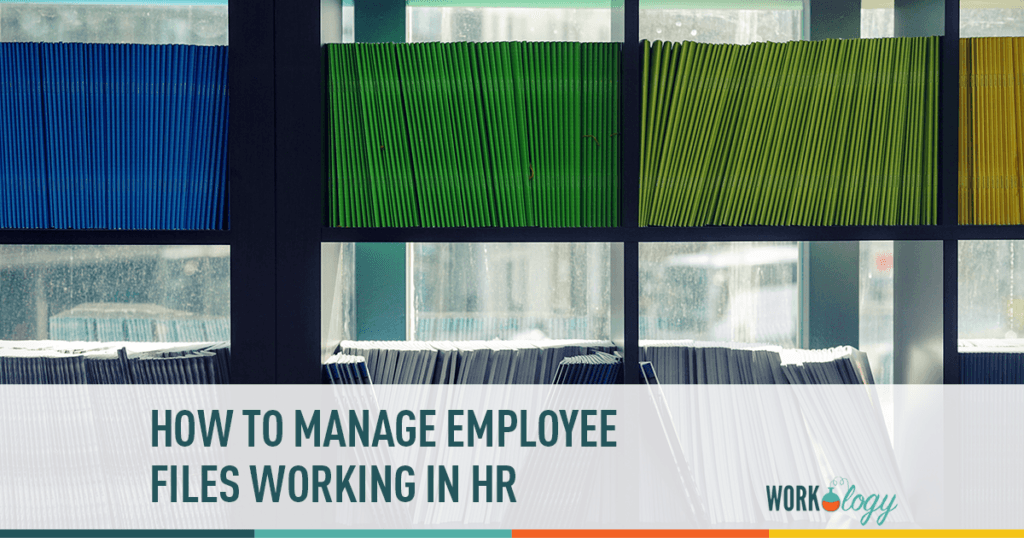As an HR Assistant, I had my first HR position. I was handed a ton of paperwork that needed to go into employee files as one of my first assignments. My trainer explained that the employee file is the core of HR documentation and was a good way to start learning the job as I stared at the mountain of paperwork and questioned whether I had made a mistake accepting this temporary position.
Ten years later, I can recall numerous instances in which I realized the importance of thorough and organized personnel files. Keeping track of employee files is a key component of HR, whether it’s for defending a choice to promote someone, defending corrective action, or supplying evidence in a case of wrongful termination.
It is important to have several different files for all your employee paperwork. In today’s post I will look at some ways to ensure your files are in good shape.
Main Employee File
The main employee file should contain the following:
- Most new hire paperwork
- Job application and resume
- Performance reviews
- Corrective action
- Training certifications
- Pay increases
- Exit paperwork
- Other work performance and job history documentation
This is a lot of paperwork, so classification files work best. They allow you to sort information on separate tabs for easy access later on. Shoving a bunch of paper in a manila folder can be a nightmare to sort through when you have years and years of paperwork to go through to find information on something that happened in the past.
Our content continues after the ad.
Ads help make OUR resources free for everyone.
We respect your privacy. To see our Privacy Policy
click here.
Items to Keep Separate from the Main Employee File
These items should be kept in separate files:
- Investigation notes
- Medical information (e.g. insurance forms, work comp paperwork, requests for reasonable accommodation)
- Form I-9
- References
- EEO voluntary identification form
- Other paperwork that alludes to a protected class
Investigation Notes
It is fine for corrective action such as written warnings to be kept in the main file, but investigation notes should be kept in a separate file. If an employee views their file, you do not want them to read detailed notes about an investigation they were involved in. This could reveal confidential information about the complainant, accused or witnesses.
It is best to have file folders with the date and the name of the investigation clearly labeled. You should take careful notes while working for the company so that even after you leave, someone who is not familiar with the investigation can understand what transpired. Include details about the solution and the remedial action taken. Include any more research-related resources as well (e.g. pictures, screenshots, security camera footage).
Medical Information
Medical information must always be kept in a different place than the main employee file. Medical information may include insurance forms, work comp claims, leave of absence paperwork, reasonable accommodation requests or anything else that gives information about medical conditions or history. A file cabinet that contains a medical file for each employee can be a good way to ensure this information is separate from the main file.
Form I-9
Form I-9 must be kept in a different place than the main employee file because it may indicate an employee’s national origin and citizenship status, both of which are protected classes. Having a binder organized alphabetically with all I-9s for your company is an easy way to store this form. U.S Citizenship and Immigration Services (USCIS) is entitled to view these forms, so a binder is an organized way to show that you are in compliance with I-9 requirements.
Other Forms that Should be Kept Out of the Main File
What References should be stored confidentially apart from the main file. It is recommended to keep these apart of the main employee file because employees frequently have the right to access their files. Additionally, documents that make any reference to a protected class shouldn’t be kept in the main file. This covers items like child support garnishments and the voluntary EEO identification form.
In the End…
Your employee files should only contain the necessary documentation and shouldn’t become overburdened with unfounded grievances and tidbits of paper pertaining to the employee’s job. To avoid confusion later, keep your notes organized and simple to read.
Are your files in good shape?











